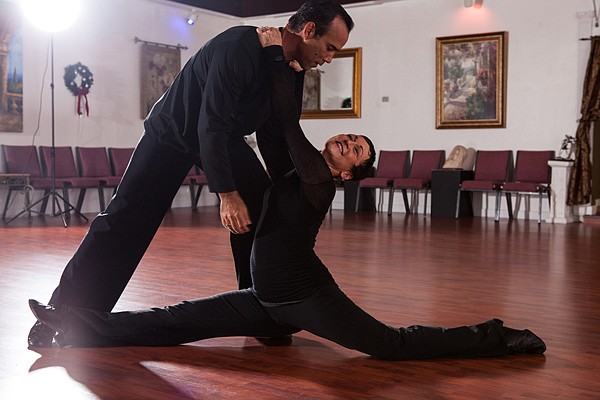- November 25, 2024
-
-
Loading

Loading

Executive: Teri Hansen, 50
Fitness passion: Competitive ballroom dancing
Career: President and creative director of Priority Marketing, Fort Myers
How she started: “I didn't start dancing until August 2000. I was 38 years old,” says Hansen. A friend, Lynn Schneider, vice president of marketing at Shell Point in Fort Myers, urged Hansen to join her for dance lessons at a studio in town. Initially, Hansen thought it would be a good idea for fitness because she's always been athletic. When Hansen found out about competitions, she was hooked. “I love competing and the pursuit of improvement. If you're going to do it, then be the best.” Hansen says you can start at any age. “The older you get, the harder it is to find things to do,” she says. “I've seen people transformed through dancing.”
The competition: Hansen's goal is to be the national amateur champion in American 9-dance, a grueling event that takes place in September in Orlando. She's already taken second place and has won about 100 medals and trophies since she started competing since late 2001. “I've beaten 25-year-olds before, and that's an awesome feeling,” she says. “I'm very strong, and very fast and I'm a very good spinner.”
Mental preparation: Focus is key to winning dance competitions. “Dancing is as much mental as physical,” Hansen says. “You have got to have your head right.” She avoids learning who her competitors will be until the event itself. “I found that would psych me out,” she says.
How she balances work and dance: “I'll schedule my vacation time around competition,” Hansen says. She also schedules practices with her dance partner, Alec Lazo, a professional dancer in West Palm Beach, on the weekends. “We're training six hours at a pop,” she says. Hansen says her dancing consists of training for competition, not socializing. “My personal life is so busy I wasn't looking for a social component,” she says. To build strength, Hansen lifts weights and rides the elliptical machine at a wellness center before work. “It is a creative expression, so it's just another outlet for creativity,” Hansen says. Dancing doesn't intrude into her work life. “I am so focused on a daily basis that I don't feel distracted,” she says. “It's a hobby. It's in its appropriate place.”
Diet: A vegetarian, Hansen starts her day by drinking a plant-based chocolate shake made by a company called Vega. Hansen says she has no sweet tooth, but eats lots of nuts. “I drink almond milk and put in blueberries,” she says.
How she manages pain: “I'm a big proponent of massage,” Hansen says. Hydration is key for recovery too, but Hansen doesn't consume sports drinks, just water. Practice shoes help soften foot pain, but hard floors can take their toll. “Your feet are on fire,” she says.
How she handles setbacks: Hansen suffered a bulging disk in her upper back in 2007 and stopped competing for two years. “I didn't rush going back in,” she says, but worried she would lose all the dancing skills she had gained. To her surprise, taking time off helped and rejuvenated her passion for dancing. “You have time to regroup and refresh,” she says. Also, after her first competition in October 2001, Hansen was diagnosed with breast cancer. Dancing helped her through those tough days. “When I danced, I danced from a whole different perspective,” she says. “It was a celebration of life.” Like any sport, there are peaks and valleys. “If anyone tells you they don't get mad, they're lying,” she says. “I don't know who wants to do something mediocre. I want to excel at whatever I do. You just keep pressing through.”
What it costs: Hansen won't say how much she spends on dance, but she says a dress can cost as much as $4,000, for example. Lessons, practices and travel expenses add up. “I work to support my habit,” she laughs.